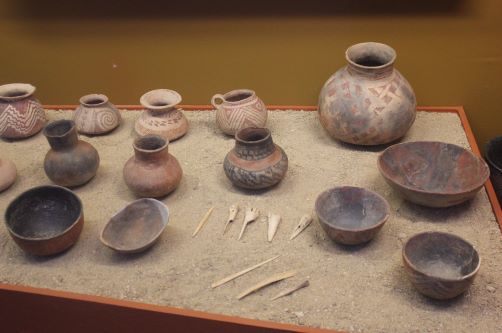

Indigenous peoples across diverse landscapes and regions wove intricate stories of survival and spirituality into their pottery and basketry. How did these artisans create such masterpieces? What roles did these crafts play in their societies? Let’s explore the rich traditions of indigenous pottery and basketry to uncover their cultural significance and timeless artistry.
Origins and Evolution of Indigenous Pottery
The pottery started with locally sourced clay and minerals mixed with organic substances like plant fibers for strength. Artisans molded vessels by hand, using primarily manual techniques. Aboriginal tribes, such as the Gabrielino Tongva, exemplify this ancient craft with their distinctive pottery, showcasing advanced techniques and unique designs.
Moreover, these techniques were passed down through generations, ensuring that each piece was crafted with meticulous attention to detail. This attention to detail served both functional and symbolic purposes, making pottery not just practical but also deeply meaningful within indigenous cultures.
Symbolism and Functionality in Pottery
Pottery served dual purposes in ancient societies. Practically, pottery vessels were crucial for storing food, water, and personal belongings, demonstrating the technical skills of their makers. Ceremonially, many pieces were adorned with intricate patterns and motifs. These decorations represented spiritual beliefs and ancestral connections, playing integral roles in rituals and storytelling traditions.
The Art of Indigenous Basketry
Traditional weaving techniques involved utilizing locally sourced fibers such as reeds, grasses, and willow, selected for their strength and flexibility. Artisans skillfully employed weaving styles ranging from coiled to twined techniques, intricately intertwining fibers to craft baskets of diverse shapes and sizes. Each basket was tailored for specific uses within their communities, reflecting both practicality and cultural significance.
Cultural Significance of Basketry
Basketry went beyond practicality, embodying cultural values and spiritual beliefs. Functionally diverse, baskets served various roles, such as gathering and storing food, carrying newborns, and presenting ceremonial offerings.
Artistically, intricate designs and patterns woven into baskets conveyed stories of creation, ancestral wisdom, and the interconnectedness of all living beings. These baskets were essential not just for everyday tasks but also as expressions of art and cultural heritage, reflecting the profound significance of weaving traditions in indigenous societies.
Sustainability and Environmental Harmony
Beyond their cultural and artistic significance, indigenous pottery and basketry exemplify sustainable practices deeply rooted in environmental stewardship. Artisans traditionally harvested materials in harmony with nature, ensuring minimal ecological impact. This sustainable ethos remains relevant today as communities prioritize conservation and ethical sourcing.
By prioritizing ethical sourcing and minimal ecological impact, these efforts foster a harmonious relationship between indigenous communities like Gabrielino and their natural environments. This approach ensures that craftsmanship continues to weave resilience, creativity, and environmental awareness into cultural heritage.
Legacy and Revitalization Efforts
In contemporary communities, efforts are underway to preserve and revitalize traditional pottery and basketry techniques.
- Cultural Preservation: Organizations and artisans collaborate to document and teach traditional methods, ensuring the continuity of these invaluable cultural practices.
- Community Engagement: Workshops and exhibitions promote awareness and appreciation of indigenous arts, fostering pride and connection among community members.
Pottery and basketry are not merely artifacts of the past but living expressions of cultural resilience and creativity. Through these crafts, indigenous peoples continue to honor their heritage, enriching both their community and the broader cultural tapestry.


